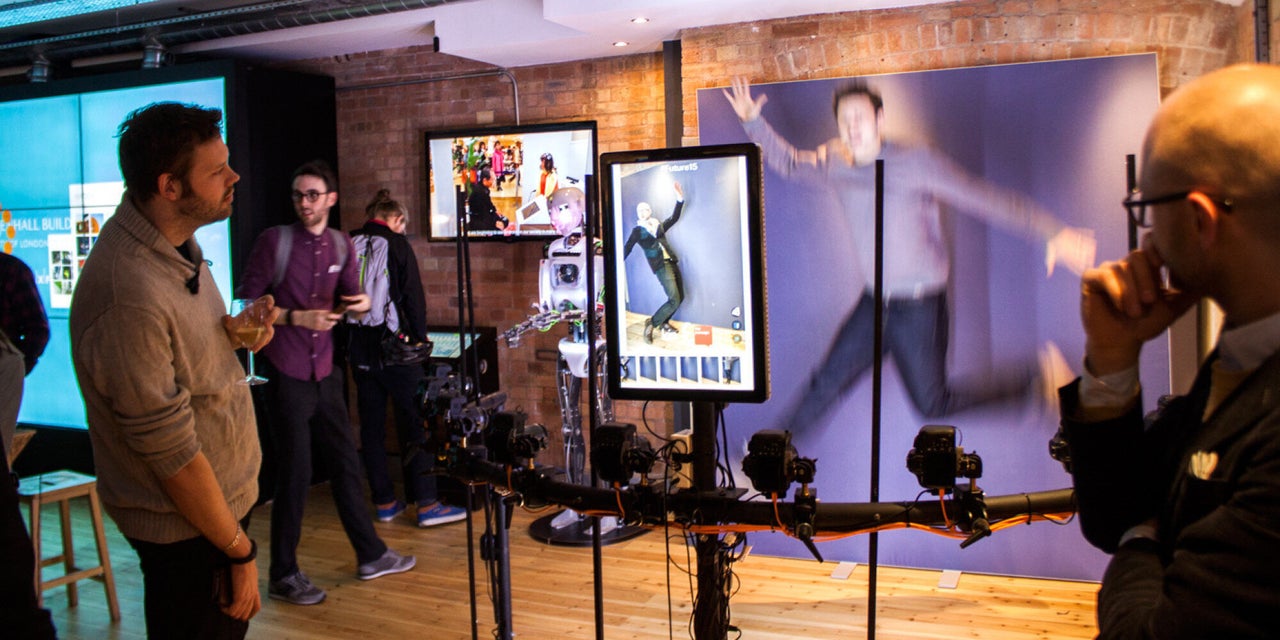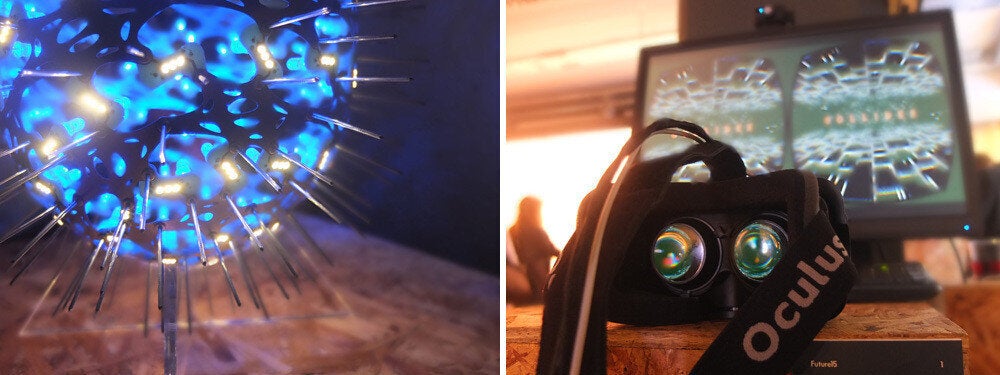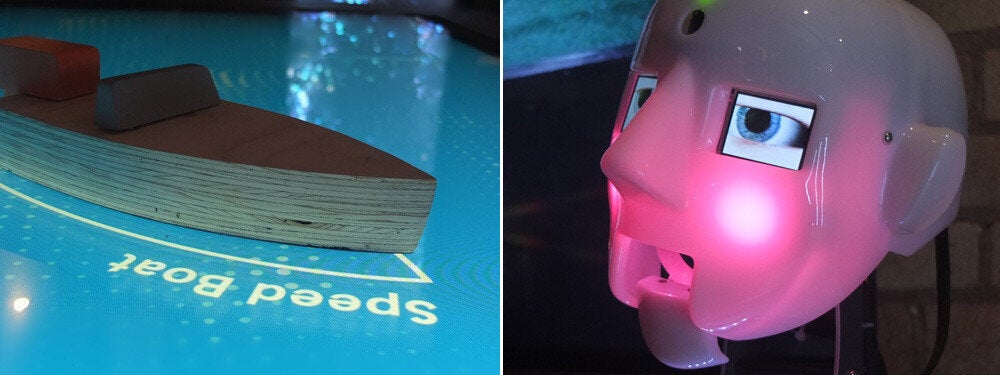What lies at the nexus of art, technology and advertising?
Two things, roughly.
One is a range of cool, interactive toys and technology. The other is a sort of hellscape in which everything is a form of marketing ’experience’, and nothing seems to make any sense.
Which of those two answers you instinctively agree with probably says something about how many steps removed you are from the Future15 showcase, currently taking place at the FLUX Innovation Lounge in East London.

Wander inside and you’re greeted with something that is one third SegaWorld, one third Millennium Dome and one third a very hip bar in Shoreditch. There are two large touchscreen tables, one of which has real wooden ships floating on top with dynamic descriptions hovering below. There is a robot that can quote Star Trek at you, and a ring of DSLR cameras ready to snap a GIF of you awkwardly saluting the internet.
Two Oculus VR headsets offer a journey into a pilot’s cabin of the future and the inside of the Large Hadron Collider. There is a 3D box with a hugely impressive magical light projection slideshow going on around a pair of Nike trainers. There is a 3D printer (of course).
The trends of 2015 obvious: physical objects are ‘in’, screen-only experiences are out. Light projections are the closest thing we have to magic. Everyone loves virtual reality, but no one has it figured out yet. Public meet-and-greet robots are cool, but still aren’t doing that much more than they did in the 18th century.
No one wants to talk about Google Glass.
All of this stuff is consumer-focused, ultimately, which is advertising speak for, well, advertising; the light projections aren’t just pretty lights, they are designed to make you want to buy more trainers. But it’s more genuine and creative than you might expect.
“What a lot of people - retail partners particularly - are interested in is blending technology with real world experiences,” Studio Output group MD Ian Hambleton told HuffPost.
“And as true to life as you can do that the better. If you have to get your phone out that chips away at the experience. Things like the projection artworks are different. The good stuff is just slightly overlaying new techniques.”
“The convergence of art and brands is a big theme for us,” Hambleton said.
“We’ve got a lot of people here that are digital artists that we pair up with brands. Ultimately it’s entertainment, the oldest form in the world, and with technology and interactivity you can take that to another level.”
The names of some of the Future 15 workshops (“Branding in a post-digital age”, “Shine & Tech Dept - The rise of the unicorns”) speak to the weird nature of that relationship, and the negotiation still going on around where the boundaries lie. But Hambleton says the need for digital artists to retain their integrity, even when working with advertisers, is ever more important.
“In this post digital age, people see through anything if it’s too sales-y. That’s one of the reason brands have to make something with more integrity.”
The aforementioned specter of Google Glass is part of that. Future15’s press videos from 2014 feature several shots of cool, hipster types wearing Google’s wearable cameraphone. Today Google Glass is off the market - possibly to return in another form later, but currently something of a mass-market failure. So what’s to say that Oculus VR sales booths, 3D light boxes and talking robots aren’t going the same way?
Daniel Hirschmann, who is a co-founder of both Technology Will Save Us (who make DIY electronics kits aimed at children and families) and Hirsch And Mann (“a thinking by making studio”) thinks that ultimately it might not matter. These types of events - and studios, and conceptual tech demos - are about exploration, but not necessarily about destination.
“We believe that we are heralding a future that we want to be a part of. But at the end of the day if we don’t exist in 10 years’ time, perhaps that wasn’t the right future!” he said.
“What I think is interesting, is that ours is a future of learning and making tangible technology experiences. It’s the beginning of a wave. We see that wave coming, we want to be a part of that.
“That’s what the future is all about. The stuff that heralds it is just a little taste of what’s really happening.”